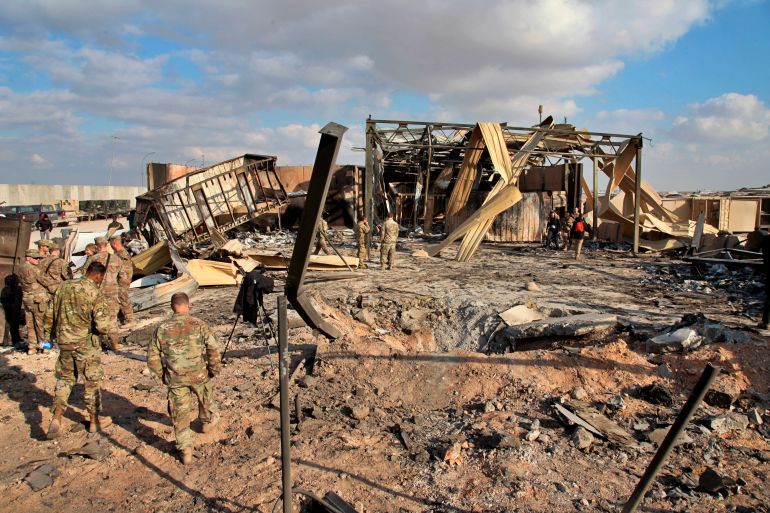Trump admin sought to play down troop injuries in Iraq: Official
Former defence official says she was pressured to minimise injuries of 100 US troops from 2020 Iranian missile strike.

A former Pentagon spokeswoman has said the White House under former President Donald Trump had pressured the military to downplay injuries sustained by 110 US troops following a 2020 Iranian missile attack on a base in Iraq.
Alyssa Farah, speaking on the One Decision podcast, said there was pressure from the White House to downplay the success of the attack on the Ain al-Asad base in Iraq, which came in retaliation to the US killing of top Iranian commander Qassem Soleimani in a drone strike at the Baghdad airport on January 3.
Keep reading
list of 3 itemsA year without Soleimani: Will Iran retreat regionally?
US Congress chips away at law used to justify Soleimani strike
While Farah said that Trump’s initial claim that there were no injuries to US troops from the strike “was true at the time that we gave those facts to the president”, she noted White House pressure increased as more casualties came to light.
Trump also initially dismissed those injuries, which the Pentagon later described as mild traumatic brain injuries, as “headaches”. While most of those injured were cleared days later, several had to be flown out of Iraq for treatment.
“There was not enough weight given to the potential of injuries that could develop over time or even just the significance of the attack,” she said.
“There was an effort from the White House to want to say – the Iranians were not successful in harming our targets in response,” Farah said. “And I think that went too far.
“And I think that it ended up glossing over what ended up being very significant injuries on US troops after the fact,” Farah said. “A hundred-and-ten American troops had traumatic brain injuries … which can range from a concussion to something (where) you could lose motor skills.”
The former official said the White House also pressured the Pentagon to space out its reports on the number of injured, which gradually increased from January into February.
She said it was Pentagon policy to release the information as soon as it is received and verified.
“We did get pushback from the White House of ‘Can you guys report this differently? Can it be every 10 days or two weeks, or we do a wrap-up after the fact?’” Farah said. “The White House would prefer if we did not give regular updates on it. So it kind of was this drip, drip of quote unquote bad news, that certainly helped folks that were critics of the strike that this was a mistake and these were the repercussions of it.
“My feeling was, if my experience had taught me anything, transparency is always going to be your best friend in that field,” she said. “I would much rather deal with that bad news story than the bad news story of you withheld this from us.”
Farah, who went on to work in the White House under Trump, also defended the overall decision to strike Soleimani, saying she was “comfortable with the legal justification, based on the knowledge we had a very credible reason to believe an imminent strike was being planned and was going to take place that targeted US forces, as well as our coalition partners”.
That legal justification has been heavily questioned, with Agnes Callamard, the United Nations special rapporteur on extrajudicial, summary or arbitrary executions, deeming the strike an “unlawful killing”.
Bipartisan members of Congress pushed back on the Trump administration assertion that Soleimani was planning an “imminent” attack, saying classified intelligence briefings they received did not indicate a specific attack was being planned.
Trump administration officials themselves also presented at times contradictory accounts of how imminent the attacks were, with former Secretary of State Mike Pompeo eventually referring to the strike as part of a larger strategy of “deterrence”.